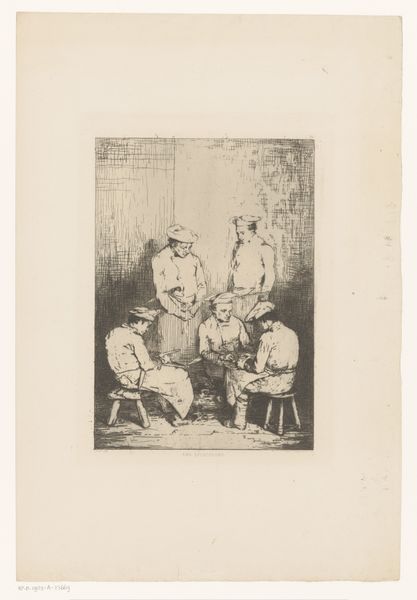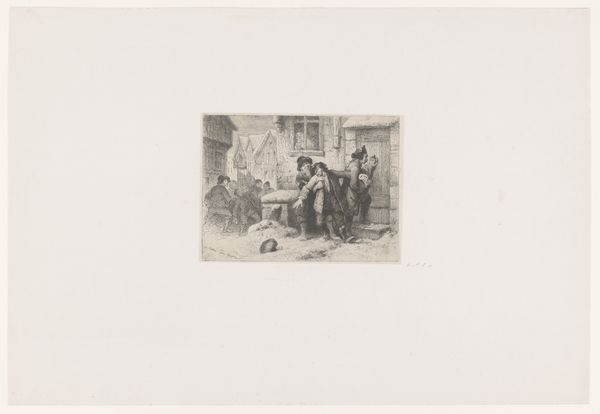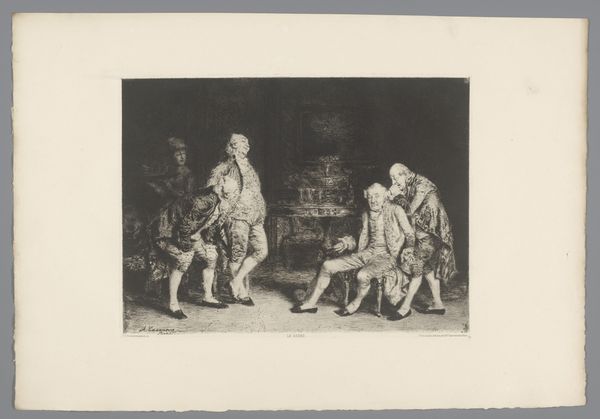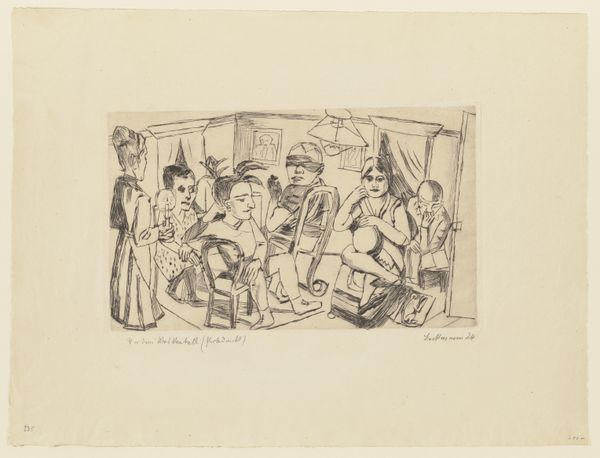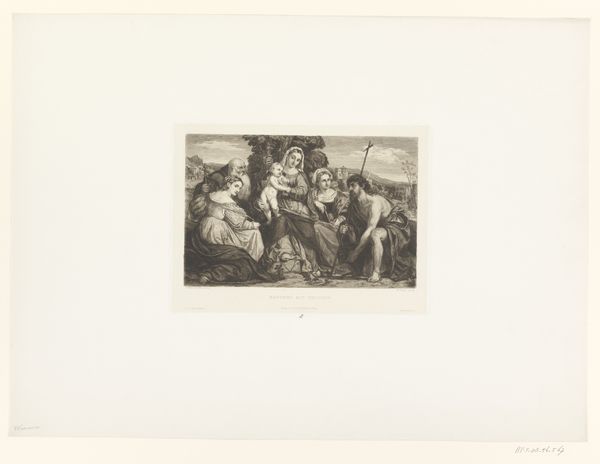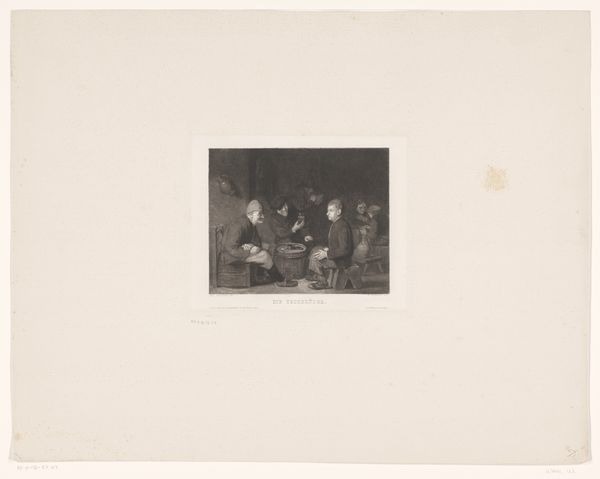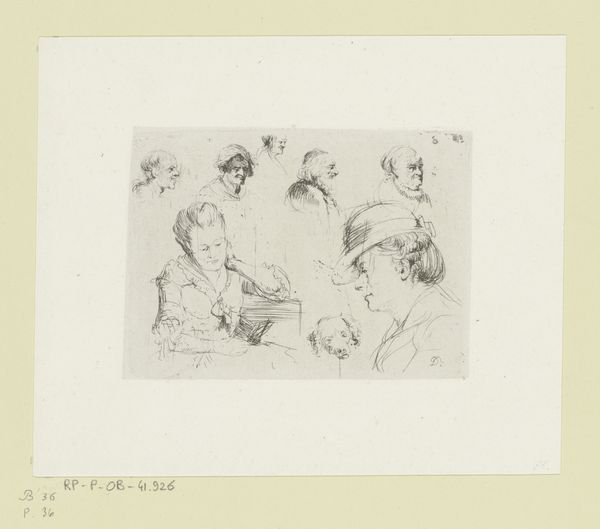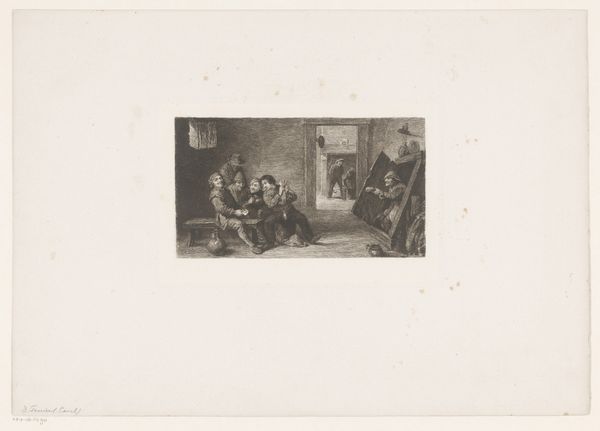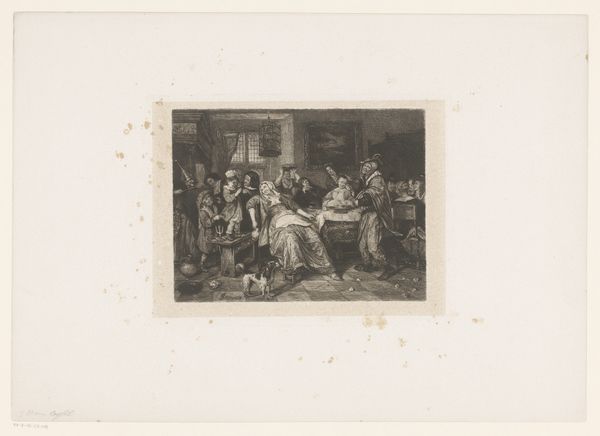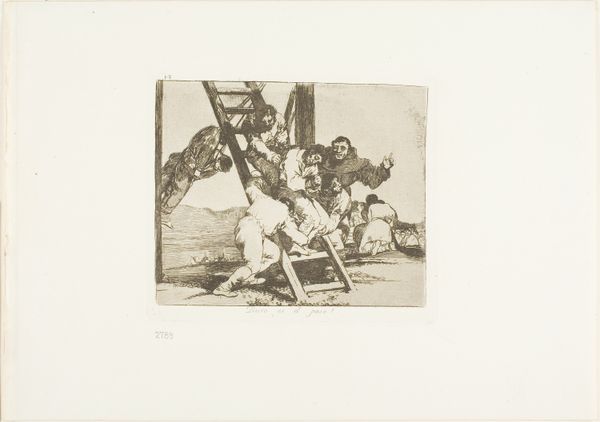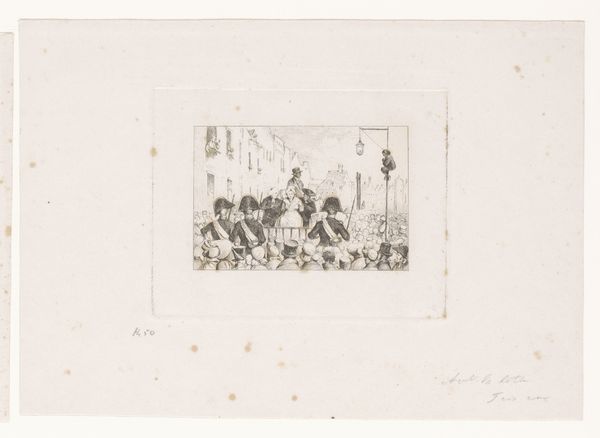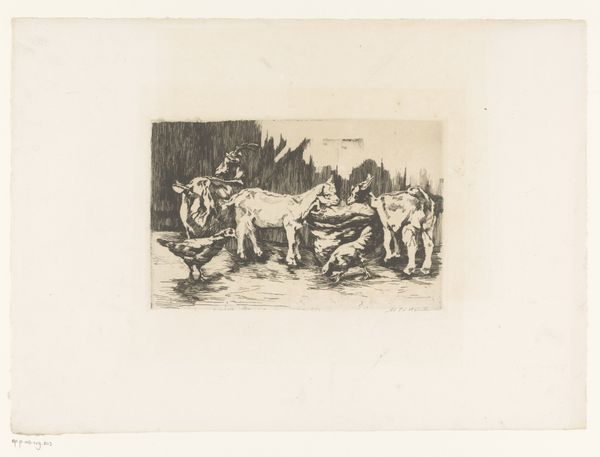
Dimensions: height 238 mm, width 318 mm
Copyright: Rijks Museum: Open Domain
Curator: Here we have Théodule Ribot's "Donker interieur met groep etende koks," or "Dark interior with a group of cooks eating," dating from about 1860 to 1870. It's an etching, currently held at the Rijksmuseum. Editor: My first impression is one of subdued realism. The composition is fascinating—dark tones dominate, yet light subtly illuminates the faces and postures of the figures, drawing you into their intimate world. Curator: Absolutely, and it is essential to consider the historical context here. Ribot often depicted working-class individuals, and this piece offers a glimpse into the lives of kitchen staff, perhaps reflecting the growing social consciousness within Realist art. This etching also depicts gender and class constructs in relation to servitude. Editor: Focusing on form, the stark contrast between the hatching that composes the background and the relatively smoother rendering of the figures creates depth. What seems like a Baroque influence in the treatment of light and shadow enhances the sense of the subjects and the scene as somewhat severe, wouldn't you say? Curator: The Baroque elements are unmistakable, certainly, but I also think about the socioeconomic conditions. Ribot depicts working people not merely as generic types, but as individuals participating in acts of collective pause or leisure. Editor: Note how Ribot employed a limited tonal range to express depth and volume. Also, the way he uses line to create different textures within this small world that speaks of intimacy, of people huddled around a simple shared repast. Curator: And it's that depiction that makes me ponder the visibility, or rather the invisibility, of those who perform service roles. How are these representations shaped by and shaping contemporary assumptions about labour? It really brings so much to the fore, socially. Editor: It does. Looking closely, there's a stillness and sense of immediacy captured in such a manner that truly echoes Baroque naturalism. I now find it’s not only the texture, but how these elements contribute to a harmonious visual narrative. Curator: It becomes a powerful narrative, engaging on both a formal level and prompting contemplation on the lives and societal role of those in service, something deeply important and often dismissed. Editor: Precisely, Ribot successfully marries form and content—demonstrating the potential of etching. Curator: Indeed, offering insights into 19th-century social dynamics.
Comments
No comments
Be the first to comment and join the conversation on the ultimate creative platform.
